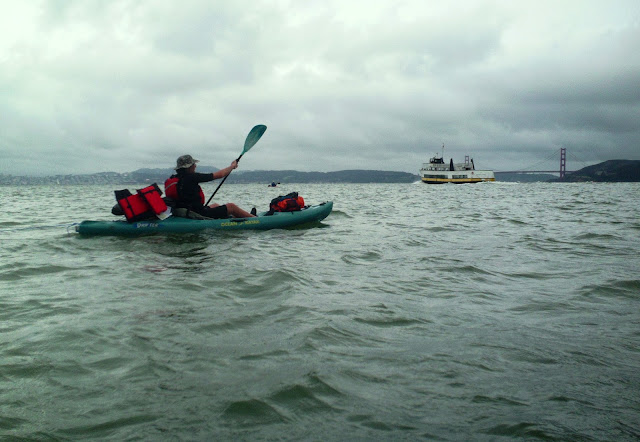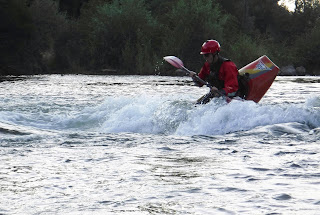"My ears were saluted with the agreeable sound of a fall of water and advancing a little further I saw the spray arise above the plain like a column of smoke which would frequently disappear again in an instant." Meriwether Lewis, June 13, 1805
It was one of those clear-skied early autumn days still being on the border of summer. Hot enough that a parade of rafters was still coming through the trees and down the bank to the water. Armed with suntan lotion, coolers and whatever that they have that can float, the army of rafters was heading down river with the flow. It's a popular activity along the American River Parkway in Sacramento throughout the summer. The Lower American River provides a cool and relaxing way to escape the heat during the summer months along its urban waterway. Rafts and inter-tubes are a common sight at the Sunrise Access all the way down to River Bend Park.
As I slid my kayak between a few rafts, I get the usual question.
"How far down are you going?" one asked.
"Not going down river today," I reply, "I'm going to paddle upstream a couple of miles."
In the foothills of California, when there is water, it comes cascading down the canyons only to be captured by reservoirs and frugally drained into its rivers like the Lower American on its way to the sea. There is a constant push to stay moving or risk losing ground.
In the past couple of weeks, I have been taking trips up some California rivers and then back down again. For me, it's always a challenging way for me to spend some time on the river without the bother of having to a shuttle. I ascended the waterway much like climbing up an assemblage of stairs. I'd crisscrossed the river's surface while paddling upstream, staying its inside, feeling the water pushing my boat backward. Rapids or fast water are hurdles along the way, however just above them are gentle pools to explore.
Scientists say that the sound of running water motivates the beaver to build. Something in the noise the churning water tells them to construct a dam. For them, it's the sound to make progress. For me, it's the call to "Hikayak" My paddling partner Carly Mariani's invented the term, a combination of hiking and kayaking when I took her on several mile trip up the North Fork of the American River. I'm sure she expected a simple cruise but ended up ascending much of the river by foot, before getting a fun trip back down.
At the narrowest point of the rapid, I locked my boat against the eddies, a relative calm where the main current flows reverse, I climbed out of my kayak and push it through the fast water or leaning forward into the stream, I lash a bowline to the boat and waded through the water pulling my kayak behind me. It's a rocky trek through the fast-moving stream to the pool above. Water shoes are a must. The footing was uneven and slippery.
It's the drive to see what is around the next bend and the anticipation of not knowing what I will see. Above the rapids, there are placid pools of scenic beauty between the next set of rushing water. There the river spreads out in spaces as I circled around the shore and find a hidden cove of backwater. There the beavers had been busy working. Green and lush, it's a quiet little world to tour and reward of getting there before heading back to ride the bouncy rapids back.











































